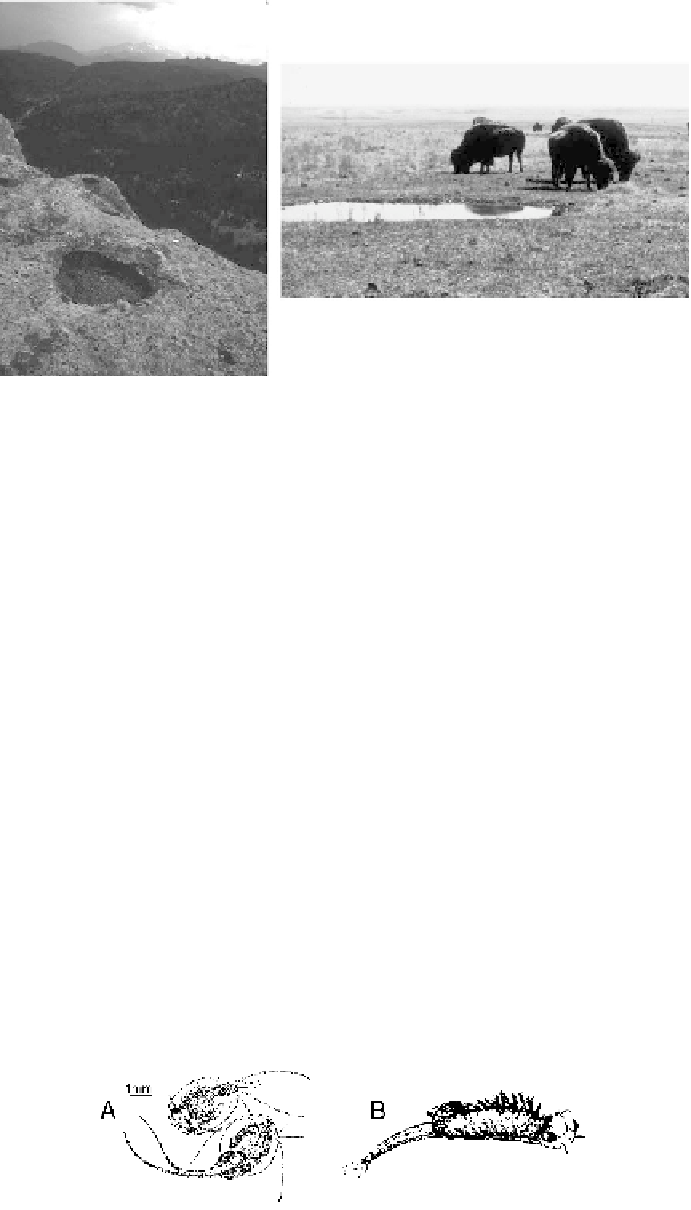Environmental Engineering Reference
In-Depth Information
FIGURE 15.6
(Left) A temporary pool formed in granite by freezing and thawing of water
and (right) a temporary pool formed by bison activity (bison image courtesy of N. Gerlanc).
with periods of drying that occur every several years, systems with regular
drying that occurs during specific seasons of the year, and systems with very
unpredictable drying (few or several times per year). Such classifications have
been useful for predicting life histories and invertebrate community structure.
Another approach considers streams across gradients of permanence from al-
ways flowing to mostly dry (Feminella, 1996). Again, some species are found
only in very permanent waters and others prefer temporary stream habitats.
Most fish are unable to exploit temporary habitats unless there is a
refuge nearby that serves as a source of colonizing organisms. Where fish
do not occur, large invertebrates that are susceptible to predation, such as
fairy shrimp or tadpole shrimp (Fig. 15.7), can be found. Life histories of
organisms in temporary pools usually feature resting stages (that are resis-
tant to desiccation) and/or life stages conferring the ability to fly, crawl, or
be blown into pools.
Temporary pools serve as important habitat for amphibians because of
the lack of fish predation in such sites. Temporary pools also allow am-
phibians with adults that utilize terrestrial habitats to reproduce in areas
without year-round water. The life history of tadpoles is often linked inti-
mately to pond permanence, and species interactions are also related to
permanence (Skelly, 1997).
FIGURE 15.7
Tadpole shrimp (
Lepidurus covessi;
A) and fairy shrimp (
Eubranchipus
hundyi,
length 7 mm; B) typical of temporary pools (reproduced with permission from Dod-
son and Frey, 1991).


Search WWH ::

Custom Search